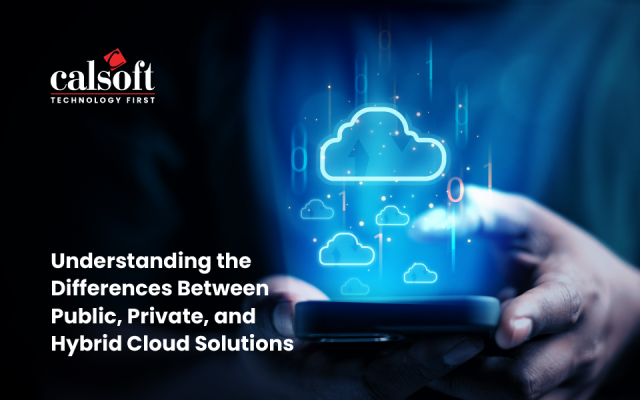Public cloud, although extremely beneficial, has been frequently targeted for its supposedly poor security posture. Despite the low cost, no-maintenance, and near-unlimited scalability benefits, when it comes to security, apprehensions continue to swirl. The fact that the security of the underlying infrastructure depends largely on the responsiveness of the public cloud vendor often means organizations have little control over who gains access to public cloud services.
However, what most people forget is that security is not just the onus of the cloud provider, but a shared responsibility of the vendor and the organization implementing the cloud solution.
Top public cloud security challenges
Because public cloud does not have clear perimeters, it fundamentally presents a range of security challenges, including:
- Increased attack surface due to the widespread use of public cloud by individuals and businesses alike
- Lack of visibility and control as all infrastructure is maintained and monitored by cloud vendors
- Constantly changing workloads that are dynamically commissioned and decommissioned at scale and velocity by the vendor
- Enforcing security, data protection, and governance policies in a flexible and dynamic environment
- Identifying and embedding appropriate security controls early in the development cycle
- Tightening cloud user roles and restricting access and privileges beyond what is intended or required
- Ensuring workloads and processes in the cloud are compliant with evolving security and governance requirements
Top recommendations
Public cloud security elements are often provided by third-party cloud providers, but these elements may not be sufficient for today’s era of evolving threats and growing vulnerabilities. As hackers get increasingly sophisticated by employing new attack techniques, enforcing the right security policies is now more than necessary.
Here are five ways in which you can enhance security in the public cloud:
- Understand that responsibility is shared: Modern cloud vendors are driving continuous efforts in enhancing the security of public clouds, but it doesn’t mean you don’t have to! Cloud security is a responsibility that needs to be shared between you and your cloud provider. While the cloud provider has the responsibility of safeguarding the cloud infrastructure, which includes maintaining, patching, and configuring cloud infrastructure, the onus of managing users, their access privileges, encryption, and compliance is entirely on you. A key weak link here is the user. Many experts have pointed to how most security vulnerabilities are introduced at the point where systems interface with the user. Hence, it is crucial to educate the user about policies and processes and ensure a culture of adherence and compliance is built into your company’s security DNA.
- Be aware of imminent risks: Because resources are widely exposed due to public cloud usage, the likelihood of security loopholes is higher. A good way to dodge these imminent risks is to be aware of them in the first place. To do this, you need to have full knowledge of who in your organization is using public cloud services and for what purpose. Since hackers often exploit weak spots, invest in cloud visibility tools to get insight into the usage as well as the current and potential weaknesses.
- Have strong access and authentication measures in place: Like every other app or system, public clouds also require strong access control and authentication measures in place for security. Make sure to grant only minimal and necessary access privileges to users; have role-based access control mechanisms in place that allow access only to authorized users. Invest in good Identity & Access Management hygiene, enforce strong password and governance policies, and more.
- Embrace DevOps early: Another way to enable and sustain public cloud security is by embracing DevOps. DevOps can not only help improve the speed and quality, but also the security of application delivery in the cloud. By integrating security practices early in the DevOps pipeline, teams can make the most of modern security tools to maintain the continuity of workflows as well as the development cycle. DevOps also helps optimize the performance without compromising on security or compliance.
- Invest in the right security tools: Since public cloud services are accessed by a large number of users, they are more prone to data breaches and thefts. Protecting the security of workflows or applications in the public cloud requires continuous investment in security tools that help visualize the threat landscape and enable quicker incident response times. This includes vulnerability scanners, Identity & Access Management tools, compliance tools, encryption tools, and more – to proactively detect issues, determine their risk profile, and allow the IT staff to take necessary steps for mitigation.
When it comes to the cloud – private or public – a zero-trust approach is the only way forward. Do not automatically trust anyone or anything within or outside the network; encrypt, verify, and authorize every user and every process. Establish a least privilege governance strategy and give users access only to the resources they absolutely need to carry out their daily tasks.
Remember, security is as much your responsibility as it is of your cloud provider; therefore, make sure to be aware of your roles and responsibilities and work in tandem with your provider to establish, enforce, and implement the right security policies and practices. And while doing all that, ensure the user is a lynchpin of the security strategy.
Calsoft has leveraged its nuanced cloud security offerings to help customers secure their critical cloud assets. Connect with us now for a free consultation.






